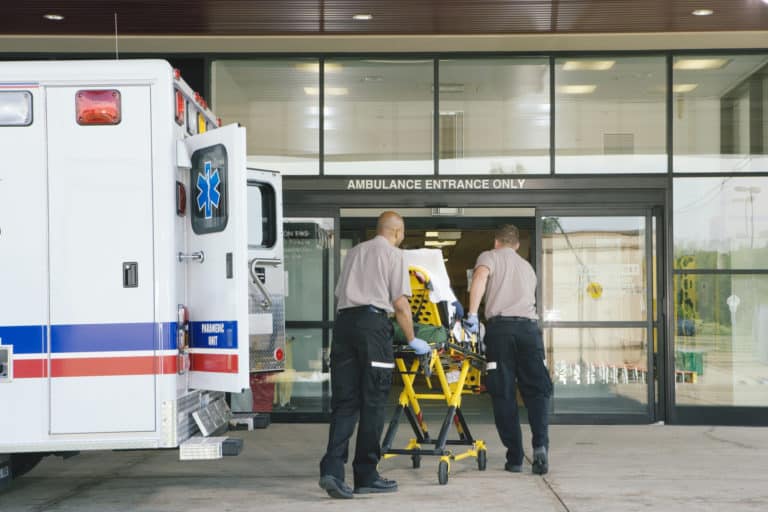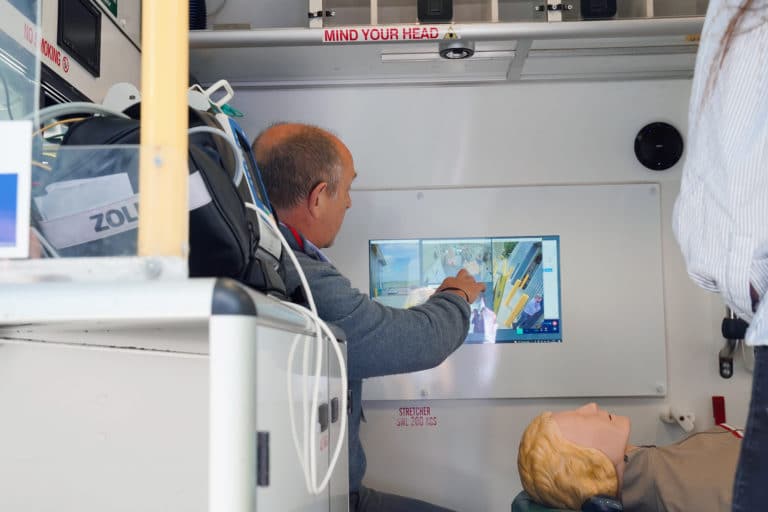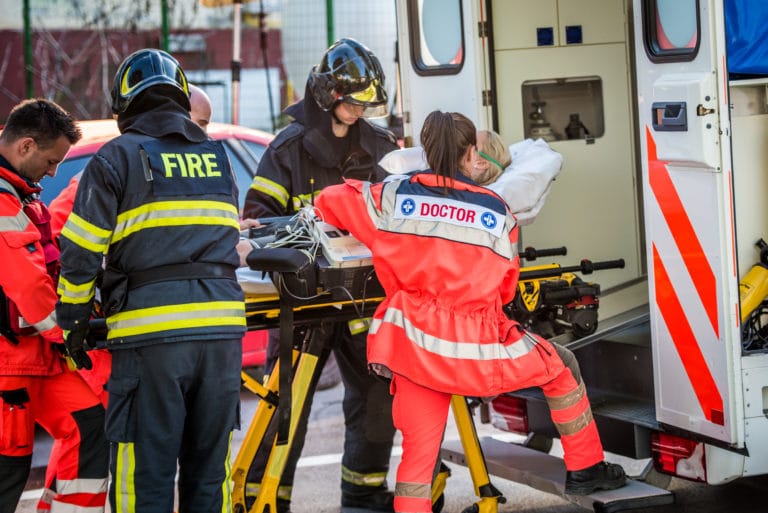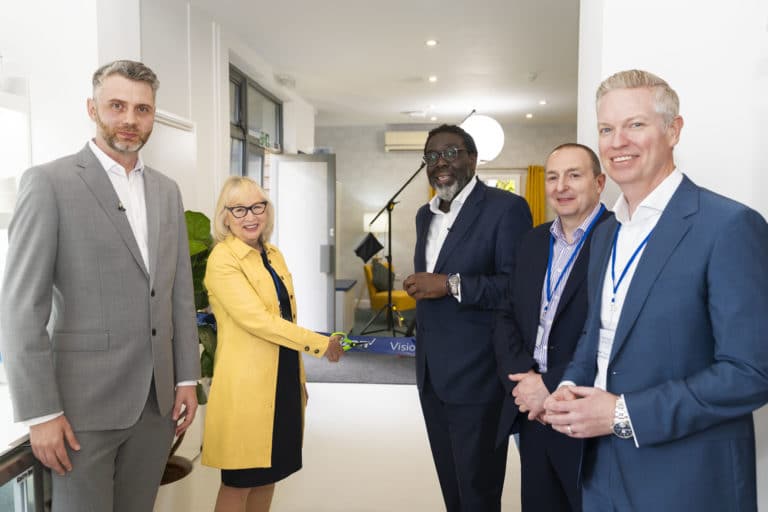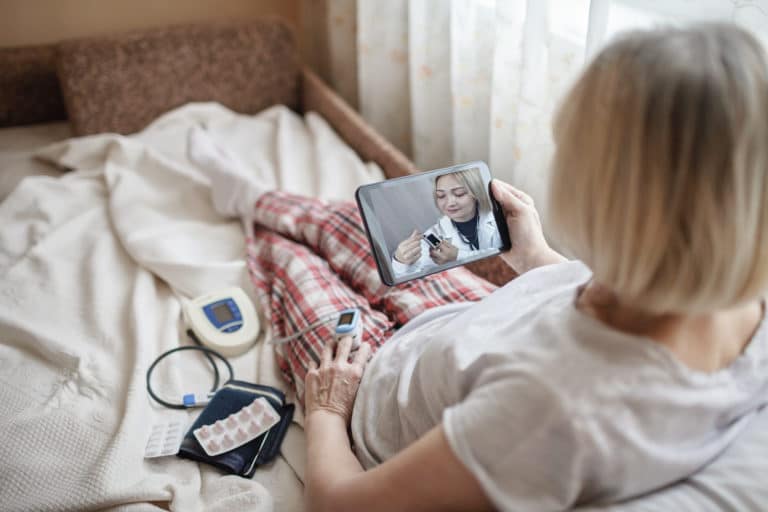Visionable brought together a panel of digital healthcare experts to discuss the rapid deployment of digital technology during the first wave of the Covid-19 pandemic; and how the NHS can scale the work that was done. This blog outlines some of their inspiring stories, while chair Mike Farrar CBE reflects on the key attributes that will enable them to be spread widely across health and care.
Visionable has been supporting a series of roundtables to explore the rapid roll-out of technology during the Covid-19 outbreak; and what comes next. At a May discussion, participants shared inspiring examples of work they had seen being done at all points along the patient pathway.
An earlier roundtable identified 12 factors that will be critical to maintaining progress. Leadership is going to be critical, so in this blog, chair Mike Farrar CBE also reflects on the key attributes that will enable boards, digital and clinical leaders to shift digital from a ‘one-off’ to ‘all-in’ across the health and care system.
Inspiring innovation across the patient pathway
Using data to tackle unequal access to services
Paul Devlin, Director of Because IT Matters ltd and Chair of Nottinghamshire Healthcare NHS Foundation Trust, told the roundtable that his area had done a lot of work on the roll-out of vaccines.
“Our vaccination centres were collecting a lot of information, and when we triangulated that with local demographic data we discovered that we were hitting the numbers but missing some members of our community,” he said. “We used that insight to target take-up.
“We used a vaccine bus to go street to street with people skilled at having conversations with people reluctant to take up vaccines: and if they agreed to be protected, we could do that right away.”
Next? Integrated care systems need to think creatively about their data. “How can you do a similar data trawl, and triangulate it with other data sources, to target health inequalities?”
Digital-first emergency care
Dr Amanda Doyle OBE, the ICS Lead for Lancashire and South Cumbria, said one of the imperatives for her area had been to find a way for patients to safely access emergency care.
“We implemented phone-first A&E, using the NHS 111 service,” she said. “Like other areas, we found that call queues built up quickly, so we linked it into NHS 111 Online, and that is starting to work well.
“People could use the NHS 111 Online triage and advice and then book a slot if they really needed one. Her next challenge? To apply the same thinking to other services, such as mental health. “The issue is not the technology,” she argued. “It is getting people to think this way consistently.”
Shared care records for shared care
Jane Ives, the managing director of Wye Valley NHS Foundation Trust, said her area has been working on shared care records. All integrated care systems are required to have a ‘basic’ shared care record in place by September, but Wye Valley and its partners in the ICS want to go further.
“The first thing we want is an electronic ReSPECT form [a document that sets out an individual’s wishes about their care and treatment in a future emergency],” she said. “We want that to be electronically available, so every service is clear about the most up-to-date patient views on where and how they wish to be cared for.”
Supporting elective care
Karen Jackson, chief executive of the Locala Community Partnerships CIC, said that what had struck her during the pandemic was how fast pathways had changed to keep patients out of hospital whenever possible and to support rapid discharge.
“We worked together to do something that we had talked about for a long time, which was making sure that people weren’t in hospital when they did not need to be,” she said. “Then, we enabled that with digital.”
Now, she added, Locala is working on ideas like prehab services, to support people on the NHS waiting list and get them into the best possible shape for treatment. Her take? “We can shift care, all of us.”
Digital care pathways
Len Richards, the chief executive of Cardiff and Vale University Health Board, who is about to take up a new position as chief executive of Mid Yorkshire Hospitals NHS Trust, said Wales already has an integrated care system.
He argued that one of the big benefits is that this encourages primary and secondary care clinicians to sit down and discuss where patients should be treated. “We support that with a system called Care Pathways that we borrowed from Canterbury Health Board in New Zealand,” he added.
“It allows everybody in the system to see care pathways as they are developed and then makes them easily available to all those involved in a patient’s care.”
His ambition? To keep going. “The critical thing is to get people discussing how to deliver care in the right place. Digital makes the outcomes of those discussions available to everyone.”
Social care
Iain MacBeath, director of health and community services for Hertfordshire County Council, said he was excited about some of the new technology coming into people’s homes.
“First, we had alarm systems, then we had sensors for floods and fires, and now there is a new generation of technology: boxes in the corner that pick-up location and movement,” he said. “They can tell you whether people are sleeping in their bed or in a chair. Whether people are coming to the house or someone is going out.
“It gives you a rich picture of what is going on… which means you can expedite discharge or wrap-in services that make people much more confident about staying in their own homes.” It was, he suggested, something the NHS should be looking to support and work with as it developed new care pathways.
Population health management
Roundtable participants noted that all these new systems would also generate data that could be used for population health management and to address health inequalities.
Dr Amanda Doyle said her ICS has already done some interesting work matching lists of houses in multiple occupation and people who need help with their bins to GP records, to pick-up unmet needs and address them. “Some of the tools that we are already using to target our more deprived populations are exactly what are needed for population health management,” she said.
The next step? “Not just tools that let you plan, but that let you react in real-time, to affect clinical outcomes. So, we’re not just looking at what we can do to influence demand, but at what we can do today that will allow our district nurses do something that will reduce admissions tomorrow.”
Reflection: Key attributes that will lead to the spread of digital innovation
Mike Farrar: “The stories that we heard in the latest roundtable were inspiring, but we need to make sure that these do not stay as small, inspiring stories.
We need trusts and emerging ICSs to work out how to sustain progress and to implement new ideas with the same imperative as we did things 12-months ago. To do that, I think system, digital and clinical leaders need to adopt six key attributes that have been shown to lead to the spread of digital innovation:
We need to:
- encourage leaders with curious mindsets; leaders who want to hunt out best practice and bring it to their organisations, and who are not subject to ‘not invented here’ ideology.
- encourage health and care organisations to lay out their problems and invite suppliers to work with them on potential solutions. We need to move from a customer and supplier relationship with vendors to a partnership approach.
- build in discounts or bonuses for innovators who share new work and fund the promotion of best practice.
- praise and reward followers as well as initiators.
- create intelligence hungry boards. We need leaders who are hungry for evidence about what works and who want to benchmark themselves against others to identify where gains are possible.
- encourage ICSs and providers collaboratives to compare approaches and to fund or ensure they see a commercial benefit for scaling-up the best performing solutions and services.
As the roundtable identified, we need leadership that is focused on doing the right thing for patients, on letting people with good ideas run with them, and not reacting with ‘blame and recrimination’ if they don’t pan out. I really believe we can get this right, and I can’t wait to see what happens when the system goes ‘all-in’ for digital innovation.”



